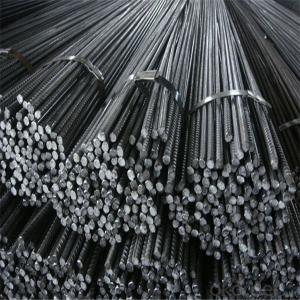HRB500 Deformed Steel Rebar for building
- Loading Port:
- Tianjin
- Payment Terms:
- TT OR LC
- Min Order Qty:
- 100 m.t.
- Supply Capability:
- 18000 m.t./month
OKorder Service Pledge
OKorder Financial Service
You Might Also Like
Item specifice
Rebar is common steel reinforcing bar, an important component of reinforced concrete and reinforced masonry
structures. It is usually formed from mild steel, and is given ridges for better frictional adhesion to the concrete.
Concrete is a material that is very strong in compression, but virtually without strength in tension. To compensate
for this imbalance in concrete's behavior, rebar is formed into it to carry the tensile loads.
Our Advantage: High quality steel products from 1 class mills in China
Reasonable price
Professionalism of the products
On-time delivery
Complete documents and certificates
Sincere service to meet our clients' requirements
Product Description :
Chemical composition (%): | Steel | C | Si | Mn | P | S | Ceq | ||||
HRB335 |
0.25 |
0.80 |
1.60 |
0.045 |
0.045 | 0.52 | |||||
HRB400 | 0.54 | ||||||||||
HRB500 | 0.55 | ||||||||||
Mechanical properties | Steel | Rel/ MPa | Rm/ MPa | A/ % | Agt/ % | ||||||
≥ | |||||||||||
HRB335 | 335 | 455 | 17 |
7.5 | |||||||
HRB400 | 400 | 540 | 16 | ||||||||
HRB500 | 500 | 630 | 15 | ||||||||
Package: | Standard export packing or as customer's request | ||||||||||
Application: | Construction, building, bridge, road. ect | ||||||||||
Payment terms | 1).100% irrevocable L/C at sight. | ||||||||||
Delivery time | 15-30 days after receipt of L/C or deposit by T/T | ||||||||||
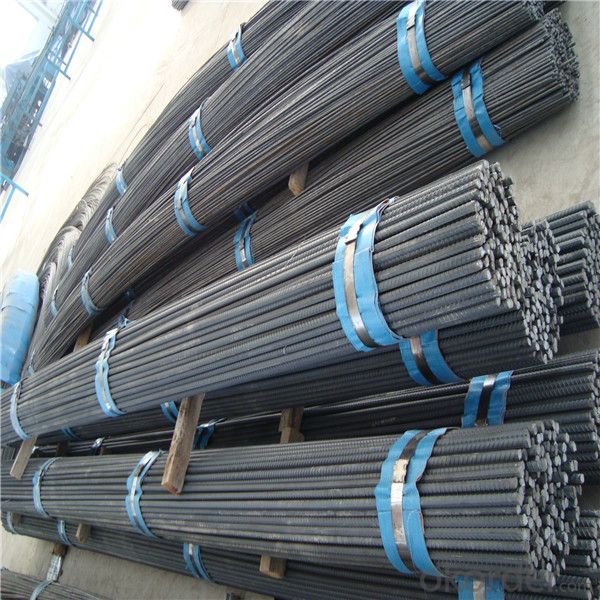
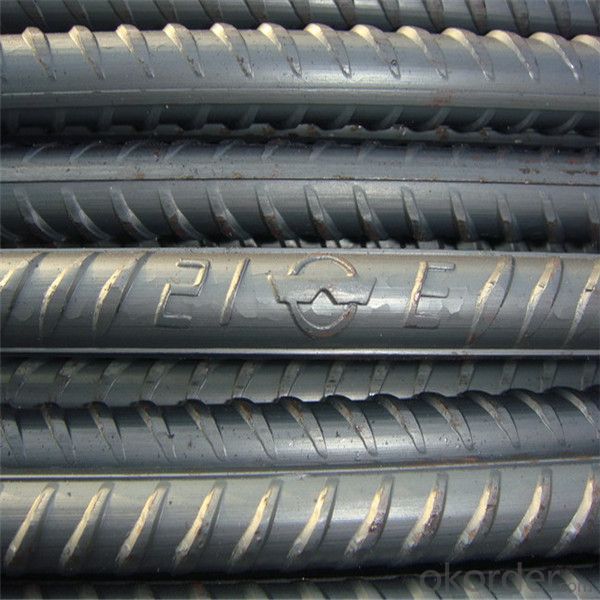
Packing:
In bundles, each bundle weight 3.5 tons. Load by container or by bulk verssel.
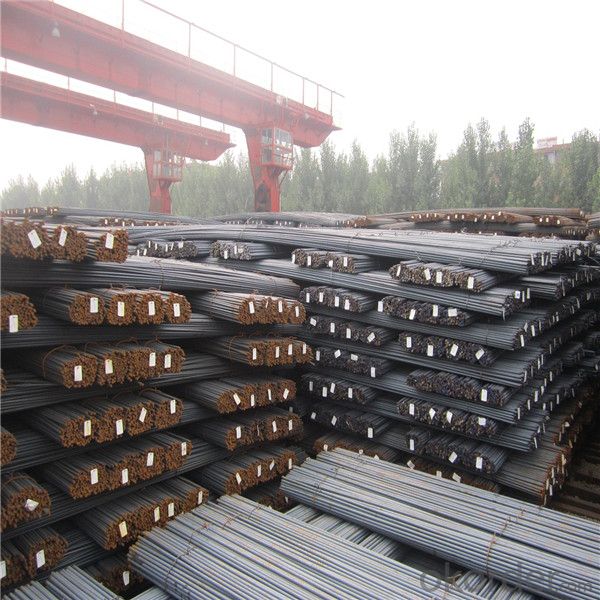
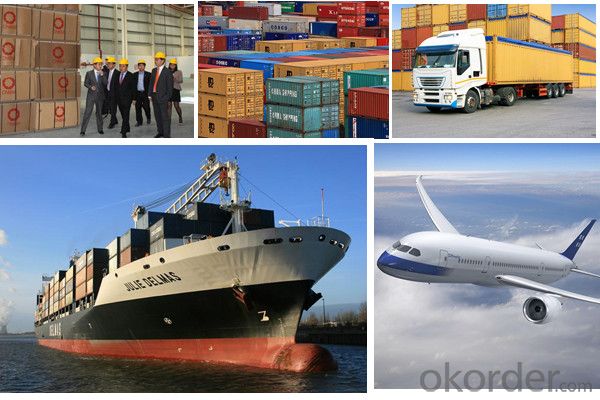
Our service
(1) We cooperate with famous factories with advanced equipment and well trained workers.
(2) We can provide factory price with trading company service.
(3) We continuously work on the improvement of our processes, guaranteeing consistently high standards
of quality to keep none compensation.
(4) We guarantee 24 hours response and 48 hours solution providing service.
(5) We accept small order quantity before formal cooperation.
(6) We deliver the agreed quality at the agreed time, reacting to changes in customer wishes in a flexible way.
(7) Due to our volume and selling power, we have excellent freight rates with shipping lines.
(8) We strive to always be fair and honest in our dealings with customers.
(9) We strive to work together with customers to achieve much more than we can achieve alone.
(10) Through our passion and commitment we aim to be a market leader in all our key markets. To maintain
our position as market leader we must continue to add value in all that we do.
FAQ:
1.Q: What's your MOQ(minimum order quantity)?
A: One full container, mixed acceptable .
2. Q: What's your packing methods?
A: Packed in bundle or bulk ..
3. Q: How can I buy CNBM products in my country?
A:Please send us an inquiry or email ,we will reply to you if there is distributor in your country
4. Q: Can we visit your factory?
A: Warmly welcome. Once we have your schedule, we will arrange the professional sales team to follow up your case.
5. Q: How long does it take to get the product if i place an order?
A:With the process of your requirements,we will pack and deliver in 3-7 days. If it is by sea shipment,it will take 15-45 days depending on different locations
- Q:Are steel rebars eco-friendly?
- Steel rebars are not inherently eco-friendly as they are made from mined iron ore and have a significant carbon footprint during the manufacturing process. However, they can be considered more sustainable compared to alternatives like concrete rebars as steel can be recycled indefinitely, reducing the need for new production and minimizing waste. Additionally, steel rebars provide strength and durability to structures, leading to longer lifespans and potentially reducing the environmental impact associated with frequent repairs and replacements.
- Q:What is the impact of steel rebars on the construction timeline?
- Steel rebars have a significant impact on the construction timeline as they play a crucial role in reinforcing concrete structures. By providing strength and durability, rebars ensure the structural integrity of buildings, bridges, and other infrastructure projects. However, their installation requires careful planning and coordination with other construction activities, which can sometimes cause delays in the overall timeline. Nevertheless, the use of rebars ultimately enhances the longevity and safety of the construction project, outweighing any temporary setbacks.
- Q:How do steel rebars contribute to the strength of a structure?
- Steel rebars contribute to the strength of a structure by reinforcing the concrete. The rebars act as a skeleton, providing tensile strength to counteract the concrete's weakness in tension. This reinforcement prevents cracks and structural failure, enhancing the overall strength and durability of the structure.
- Q:What is the recommended diameter of steel rebars for beam reinforcement?
- The recommended diameter of steel rebars for beam reinforcement typically ranges from 10mm to 25mm, depending on the specific design requirements and load conditions of the beam.
- Q:What are the standards and specifications for steel rebars?
- International organizations such as ASTM and ISO primarily establish the standards and specifications for steel rebars, also known as reinforcing bars. These standards guarantee that steel rebars meet specific requirements for strength, durability, and dimensional accuracy. ASTM A615 is one of the most commonly used standards for steel rebars. It covers deformed and plain carbon-steel bars for concrete reinforcement. This standard sets the minimum yield strength, tensile strength, and elongation properties for various rebars grades, including Grade 40, Grade 60, and Grade 75. It also outlines the mechanical properties, chemical composition, and bending properties of rebars. Aside from ASTM A615, there are other standards that provide specifications for steel rebars. ASTM A706, for instance, focuses on low-alloy steel bars for concrete reinforcement. This standard ensures that rebars possess improved weldability and ductility to withstand seismic forces and other dynamic loads. ISO 15630 is another significant standard that addresses steel for concrete reinforcement. It provides specifications for hot-rolled and cold-worked steel bars, as well as welded fabric and lattice girders. ISO 15630 outlines the mechanical properties, chemical composition, and dimensional tolerances of rebars. Furthermore, regional or national organizations also establish their own standards for steel rebars. For instance, the BSI has developed the BS 4449 standard, which specifies the requirements for carbon steel rebars used in concrete reinforcement in the United Kingdom. Similarly, the ISI has set the IS 1786 standard for cold-twisted steel bars used in concrete reinforcement in India. In conclusion, the standards and specifications for steel rebars ensure that these construction materials possess the necessary strength, ductility, and other properties required for reinforcing concrete structures. By adhering to these standards, manufacturers, engineers, and construction professionals can ensure the safety and durability of reinforced concrete projects.
- Q:How do steel rebars contribute to the seismic performance of concrete buildings?
- The seismic performance of concrete buildings is greatly enhanced by steel rebars. These rebars provide reinforcement to the concrete structures, making them more resistant to the powerful forces exerted during an earthquake. Without proper reinforcement, the concrete can crack or collapse under the intense shaking. To strengthen the concrete and mitigate the effects of seismic activity, steel rebars are strategically placed within the concrete, forming a network that increases the tensile strength of the structure. Concrete is strong when compressed but weak when subjected to tension, while steel has excellent tensile strength. By combining the two materials, the rebars effectively distribute the seismic forces throughout the concrete, preventing cracks from spreading and allowing for a more flexible response. Not only do steel rebars improve the tensile strength, but they also enhance the overall stiffness of the structure. This stiffness helps to minimize the building's response to vibrations during an earthquake, reducing the potential for damage. Acting as a backbone, the rebars increase the concrete's resistance to deformation and contribute to the overall structural integrity of the building. Furthermore, steel rebars contribute to the ductility of the structure. Ductility refers to a material's ability to deform under stress without losing its structural integrity. During an earthquake, the building undergoes significant displacement and deformation. Steel rebars allow the concrete to flex and absorb the energy from seismic forces, preventing catastrophic failure. This ductile behavior ensures that the building can withstand the shaking and provides occupants with more time to evacuate safely. In conclusion, steel rebars are essential for improving the seismic performance of concrete buildings. They enhance the tensile strength, stiffness, and ductility of the structure, reducing the risk of damage or collapse during an earthquake. By reinforcing the concrete, steel rebars play a critical role in ensuring the safety and resilience of concrete buildings in areas prone to seismic activity.
- Q:What is the effect of welding on the properties of steel rebars?
- The effect of welding on the properties of steel rebars can vary depending on various factors such as the welding process, parameters, and the quality of the weld. Generally, welding can introduce localized heat, which may lead to changes in the microstructure and mechanical properties of the rebars. These changes can include the formation of a heat-affected zone (HAZ) with altered hardness, strength, and toughness. Additionally, the weld itself may have different properties compared to the base metal, such as lower ductility or higher susceptibility to cracking. Therefore, it is crucial to carefully control the welding process and ensure proper welding techniques to minimize any adverse effects on the rebars' properties.
- Q:What are the main characteristics of steel rebars?
- Steel rebars, also known as reinforcing bars, possess several key characteristics that make them an essential component in construction and engineering projects. Firstly, steel rebars exhibit exceptional strength and durability. They are primarily made from carbon steel, which provides high tensile strength, enabling them to withstand heavy loads and stresses without deformation or failure. This strength makes them crucial for reinforcing concrete structures, enhancing their structural integrity and resistance to bending, cracking, and shear forces. Another important characteristic of steel rebars is their corrosion resistance. Since steel can be prone to rusting when exposed to moisture and air, rebars are often coated with epoxy or other protective materials to prevent corrosion. This ensures the longevity and durability of the reinforced concrete structures, making them suitable for various environments, including marine or high humidity areas. Furthermore, steel rebars possess excellent thermal conductivity, allowing them to effectively disperse heat, which is particularly important in structures subjected to extreme temperatures or fire hazards. They also have good bonding properties with concrete due to their ribbed or deformed surface. This textured surface enhances the adhesion between the rebar and the concrete, preventing slippage and providing improved structural stability. Additionally, steel rebars are versatile and can be easily shaped and bent to fit the required design or specifications of a construction project. They are available in various sizes, lengths, and grades, allowing engineers and architects to select the appropriate type of rebar based on the specific load-bearing requirements of the structure. In summary, the main characteristics of steel rebars include their strength, durability, corrosion resistance, thermal conductivity, bonding properties, and versatility. These qualities make steel rebars an essential component in construction, ensuring the safety, stability, and longevity of reinforced concrete structures.
- Q:Are there any limitations on the maximum spacing between steel rebars in concrete?
- Yes, there are limitations on the maximum spacing between steel rebars in concrete. These limitations are defined by building codes and standards to ensure the structural integrity and strength of the concrete. The maximum spacing between rebars depends on various factors such as the size and type of rebar, the load requirements, and the specific application. It is important to adhere to these limitations to prevent structural failures and ensure the safety of the concrete structure.
- Q:What are the factors that determine the spacing of steel rebars in a concrete structure?
- The spacing of steel rebars in a concrete structure is determined by several factors that ensure the structural integrity and strength of the concrete. These factors include: 1. Structural Design: The spacing of rebars is influenced by the structural design requirements and specifications of the concrete structure. Engineers consider the loads, stresses, and forces that the structure will experience and calculate the required reinforcement spacing accordingly. 2. Concrete Strength: The strength of the concrete being used in the structure is an essential factor in determining rebar spacing. Higher-strength concrete may require closer spacing of rebars to provide adequate reinforcement and prevent cracking or failure under load. 3. Rebar Diameter: The diameter of the steel rebars also plays a role in determining the spacing. Thicker or larger diameter rebars may require wider spacing, whereas thinner rebars typically require closer spacing to provide the desired reinforcement. 4. Bar Bending and Placing: The ease of bending and placing the rebars during construction is another important factor. The spacing is often determined by practical considerations, such as ensuring proper access for workers and equipment, and facilitating the concrete pouring process. 5. Environmental Factors: Environmental conditions, such as exposure to corrosive substances or extreme weather conditions, can influence the spacing of rebars. Closer spacing may be required in corrosive environments to provide additional protection against rust and deterioration. 6. Building Codes and Regulations: Building codes and regulations set by local authorities or relevant organizations also dictate the minimum requirements for rebar spacing in concrete structures. These codes ensure compliance with safety standards and provide guidelines for construction practices. Overall, the spacing of steel rebars in a concrete structure is a critical aspect of ensuring its strength, durability, and resilience. It is determined by a combination of structural design, concrete strength, rebar diameter, construction practicalities, environmental considerations, and adherence to building codes and regulations.
1. Manufacturer Overview |
|
|---|---|
| Location | |
| Year Established | |
| Annual Output Value | |
| Main Markets | |
| Company Certifications | |
2. Manufacturer Certificates |
|
|---|---|
| a) Certification Name | |
| Range | |
| Reference | |
| Validity Period | |
3. Manufacturer Capability |
|
|---|---|
| a)Trade Capacity | |
| Nearest Port | |
| Export Percentage | |
| No.of Employees in Trade Department | |
| Language Spoken: | |
| b)Factory Information | |
| Factory Size: | |
| No. of Production Lines | |
| Contract Manufacturing | |
| Product Price Range | |
Send your message to us
HRB500 Deformed Steel Rebar for building
- Loading Port:
- Tianjin
- Payment Terms:
- TT OR LC
- Min Order Qty:
- 100 m.t.
- Supply Capability:
- 18000 m.t./month
OKorder Service Pledge
OKorder Financial Service
Similar products
New products
Hot products
Related keywords
